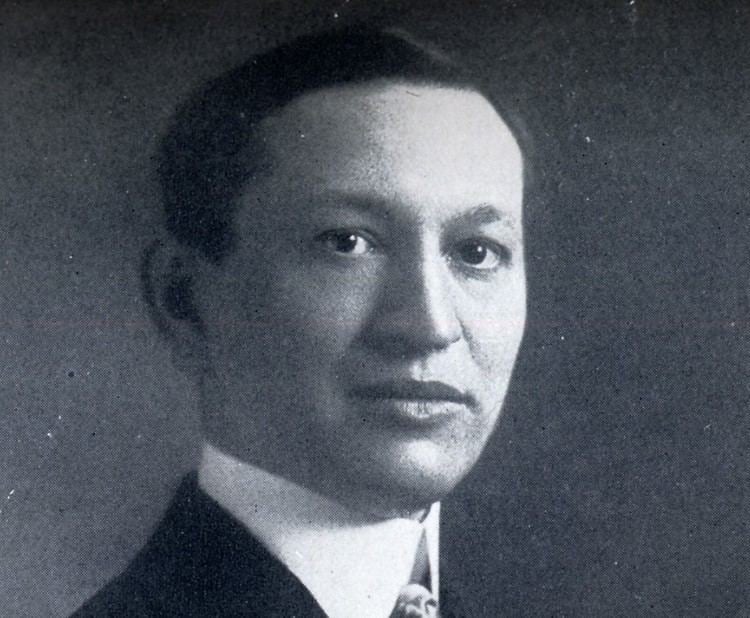Name Arthur Parker Children Bertha "Birdie" Parker | Role Historian | |
 | ||
Grandchildren Robert "Tree" Cody, Arthur Cody, Joseph Cody Books American Indian freemasonry, Seneca Myths and Folk Tales, The Indian how book, Iroquois Uses of Maize an, The life of General Ely S Par | ||
Arthur Caswell Parker (April 5, 1881 – January 1, 1955) was an American archaeologist, historian, folklorist, museologist and noted authority on American Indian culture. Of Seneca and Scots-English descent, he was director of the Rochester Museum of Arts and Sciences from 1924 to 1945, when he developed its holdings and research into numerous disciplines for the Genesee Region. He was an honorary trustee of the New York State Historical Association. In 1935 he was elected first president of the Society for American Archaeology.
Contents
Background
Arthur C. Parker was born in 1881 on the Cattaraugus Reservation of the Seneca Nation of New York in western New York. He was the son of Frederick Ely Parker, a multiracial Seneca, and his wife Geneva Hortenese Griswold, of Scots-English-American descent, who taught school on the reservation. As the Seneca are a matrilineal nation, the young Parker did not have membership status at birth, as his mother was not part of the tribe, but he was descended from prominent Seneca, including the prophet Handsome Lake, through his father. As his father Frederick had a mother of New England Puritan stock, Parker was three-quarters European by heritage.
In 1903 Arthur was adopted into the tribe as an honorary member, when he was given the Seneca name Gawaso Wanneh (meaning "Big Snowsnake"). His grandfather Nicholson Henry Parker was an influential Seneca leader. As a youth, Arthur lived with Nicholson on his farm and was strongly influenced by him.
His grandfather's younger brother (Arthur's great-uncle) Ely S. Parker was a Seneca life chief. As a young man he had collaborated with Lewis Henry Morgan on his study of the Iroquois. He served as a brigadier general and secretary to Ulysses S. Grant during the American Civil War. After the war, Ely Parker was appointed the first Indian Commissioner of Indian Affairs.
Arthur Parker was influenced by both the Seneca culture and the Christian missionary culture of his mother’s family, and his social status of bridging peoples. He explored his Seneca lineage as a way of connecting himself to a powerful, symbolic past and integrating into twentieth-century American life. Although his own family was Christian, he also witnessed followers of the Seneca prophet Handsome Lake, who had tried to resurrect traditional Seneca religion.
His daughter, Bertha Parker, was also an archaeologist and an ethnologist. Although she lacked a formal education in these subjects, she trained under M.R. Harrington, excavating with him at Mesa House in the late 1920s and early 1930s. She worked as an Archaeological Assistant at the Southwest Museum from 1931-1941 and published a series of articles on Yurok Tribe of California.
Education
Parker started his formal education on the reservation, but in 1892, his family moved to White Plains, New York. He entered public school at around age 11 and graduated from high school in 1897. Before going on to college, he spent considerable time at the American Museum of Natural History in New York City, where he was special assistant archaeologist 1901-1902. He was befriended by Frederick W. Putnam, its temporary curator of anthropology and a professor of anthropology at Harvard. Putnam encouraged the young Parker to study anthropology.
However, Parker followed the wishes of his grandfather, and attended Dickinson Seminary in Williamsport, Pennsylvania from 1900 to 1903 to study for the ministry. He left before graduating and became a reporter for the New York Sun for a few months.
He worked as an apprentice to archaeologist Mark Harrington (1882–1971), digging at sites in New York State and learning techniques. He volunteered at the Museum of Natural History in New York in his spare time.
Career
He was field archaeologist at the Peabody Museum in 1903; beginning 1906, he was archaeologist of the New York State Museum. In 1904, Parker was given a two-year position as ethnologist at the New York State Library, part of the New York State Education Department, and collected cultural data on the New York Iroquois. Then in 1906, he took a position as the first archaeologist at the New York State Museum (http://www.nysm.nysed.gov).
In 1911, together with the Native American physician Charles A. Eastman and others, he founded the Society of American Indians to help educate the public about Native Americans. From 1915 to 1920, he was the editor of the society’s American Indian Magazine. In 1916, he was awarded the Cornplanter Medal.
In 1925 Parker became director of the Rochester Museum of Arts and Sciences, where he developed the museum holdings and its research in the emerging fields of anthropology, natural history, geology, biology, history and industry of the Genesee Region. During the 1930s and the Great Depression, he also directed the WPA-funded Indian Arts Project, which was sponsored by the Franklin D. Roosevelt administration.
In 1935, Parker was elected the first President of the Society for American Archaeology. In 1944, Parker helped found the National Congress of American Indians.
Legacy and honors
Retirement
After retiring from directing the Rochester museum in 1946, Parker became very active in Indian affairs. He moved to Nunda-wah-oh, near present-day Naples, New York, where he felt his ancestors had lived. There he overlooked Canandaigua Lake. He died there on New Years Day, 1955, aged 73.
